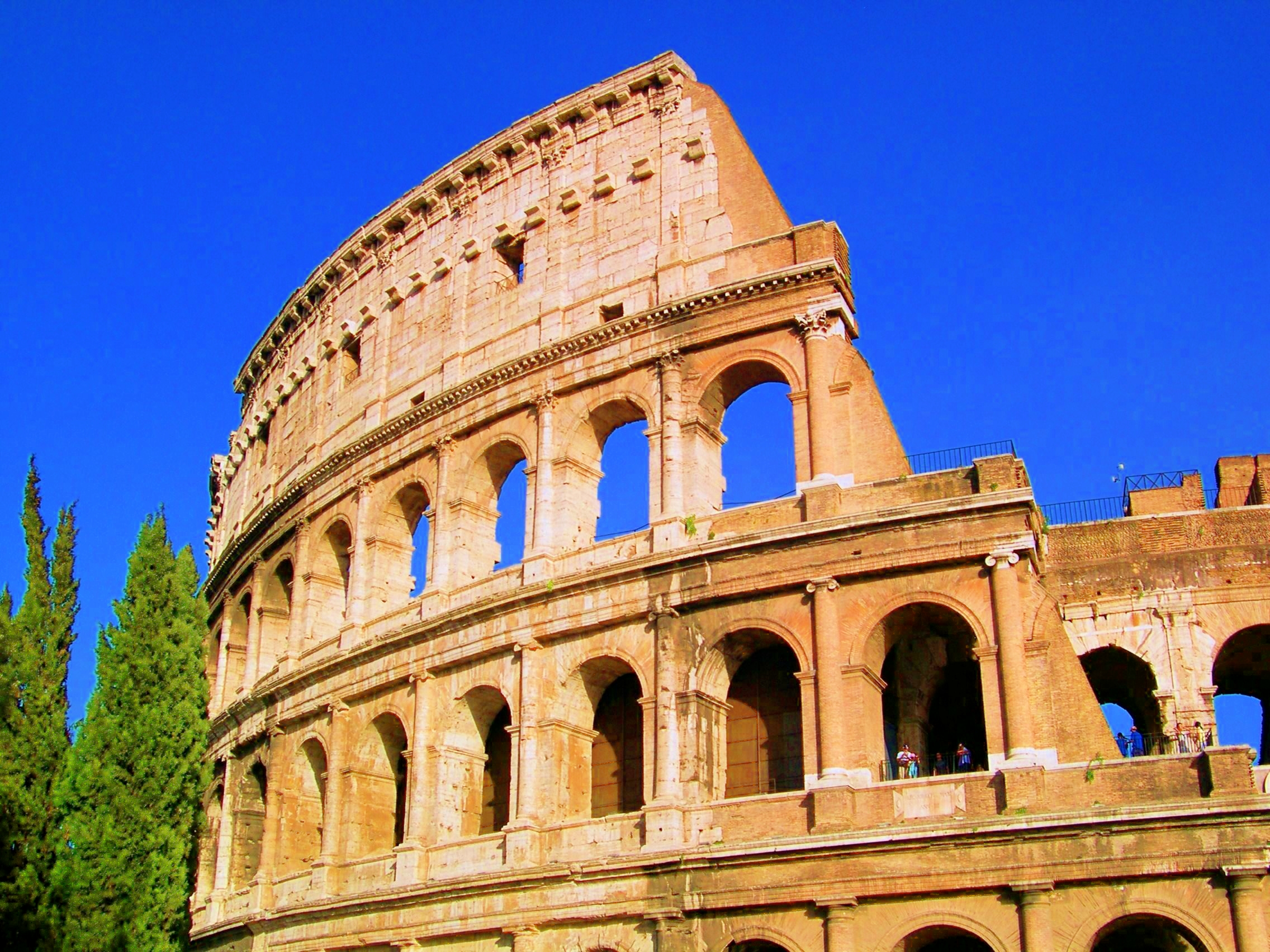So what's the scoop? http://www.youtube.com/watch?v=Avw7xqyfvZ4
The Colosseum was built from 72-80 CE by the Flavian emperors Vespasian and Titus (hence the “Flavian Amphitheatre”). The building had a statue of Nero called the “Colossus” next to it (where the name “Colosseum” comes from). Nero built the Domus Aurea, a large palatial complex where he carried out despotic and licentious acts. To give the land back to the people, the Flavians built the Colosseum to amuse them. The design is two Greek theaters pushed together to form an oval and there are groin vaulted corridors. The sand floor (called the arena) covered a network of service rooms and tunnels for the animals and gladiators. For its grand opening, Titus had a 100 day inauguration in which 9,000 animals and 2,000 gladiators were killed. There was an awning (velarium) which spread over the Coloseum and shaded the spectators underneath it. The outer wall has successive order of engaged columns (Tuscan, ionic, and Corinthian). The attic (topmost) story also had Corinthian pilasters, cartouches, and small windows. The medium is concrete and rubble mix and the veneer of the edifice is brick facing over concrete. It was built through the treasures won from Titus’ wars in Judea; he captured the Temple of Jerusalem and looted all of its wealth.
 |
| http://commons.wikimedia.org/wiki/File:Colosseum_2007.jpg |
Next, St. Martin in the Fields Church was designed by James Gibbs in 1726. It is located in Trafalgar Square in London, next to the National Gallery. Other churches have stood in this spot since 1222 (Norman Times). The initial church was actually surrounded by “fields” as well. The building was extended in 1542 by Henry VIII, who wanted to deter plague victims from coming near him. It was also enlarged by Prince Henry, but it was then torn down again in 1721. The name “St. Martin” comes from a soldier in the Roman Army (born in 316 CE in Pannonia) who gave half of his cloak to a beggar. He represents humility, humbleness, and being kind to everyone, even the homeless. The design of the present church is in the Neoclassical style. It has a Greco-roman pediment, a gothic spire, a Roman portico, Corinthian columns, and a gold cross on the spire. Neoclassicism was a movement of the 18th century based off the Enlightenment and Rene Descartes “Cogito ergo sum” (I think therefore I am). It emphasized science, reason, the middle class, and human rights. St. Martin’s is the archetypal church from Britain whose style was most imitated in America. The interior has more Corinthian columns, a ceiling with geometric/frilly designs (Rococo), and dark brown benches. In 2008, a new central window was installed in the nave because the original stained glass one was damaged during WWII. The new window was designed by Shirazeh Houshiary, a female Iranian artist. It is a cross with distorted steel framing on the glass that makes it look enlarged/ballooned out. The church today has a music department and a choir that plays Classical and Baroque music.
Sources:http://www.theguardian.com/artanddesign/artblog/2008/apr/25/throughaglasslightly
http://www.stmartin-in-the-fields.org/music/
http://www.stmartin-in-the-fields.org/about/history/

No comments:
Post a Comment